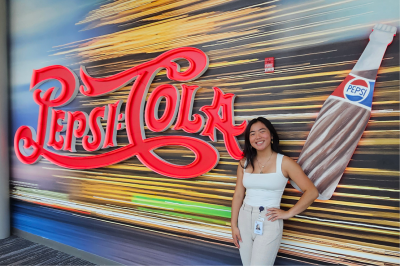Student's Thesis Shows Old-School Sharpening Technique Outperforms Newer Method
Nhung “Paige” Pham’s research reveals that an older image sharpening technique, Unsharp Masking (USM), often works better than the newer High-Pass Filtering (HPF) method, combining her photography skills with detailed scientific analysis.

The practice of image sharpening has been a critical concern for practitioners since the 1930s. At that time, optically exposed film-based workflows prevailed, and a technique known as Unsharp Masking (USM) was developed and implemented. Despite the somewhat oxymoronic name, the goal of USM is to make the final image appear sharper. USM was subsequently implemented into digital workflows, first with proprietary scanner workstations and with Adobe Photoshop and other raster image editing utilities.
In the 2010s, an alternative sharpening technique, known as High-Pass Filtering (HPF), was introduced. Since that time, the HPF technique has seen increased adoption among imaging professionals, while USM continues to have adherents among those in the professional community.
With scant published independent research comparing these two methods, Nhung “Paige” Pham knew what she wanted to investigate for her MS Thesis in the Department of Graphic Media Science and Technology at RIT.
Paige came to RIT from her native Ha Noi, Viet Nam and completed her Bachelor of Science in Photographic Science with a minor in Media Arts and Technology in 2018. She completed a Co-op at Wilson Art in Temple, Texas, and accepted a position at Schawk! (now SGK) at their San Francisco location, working on image optimization projects. Her keen interest in imaging technologies led her back to RIT in 2020 to obtain her Master of Science degree in Print and Graphic Media Science. Paige’s curiosity led her to investigate the differences between USM and HPF for image sharpening.
Working with Professor Emeritus Robert Eller and Associate Professor Dr. Bruce Leigh Myers, Paige discovered that research in these areas fell into more qualitative psychophysical studies and quantitative image analysis. She chose the quantitative approach and researched the Visual Information Fidelity (VIF) metric as the primary analysis technique for her research.
As sharpening optimization is image-dependent, the thesis work limited the types of images analyzed to macro and architectural work. Paige concluded that, in most instances, USM outperformed the HPF technique and suggested that future investigations in this domain explore other types of images and perhaps support their work with psychophysical studies.
Paige’s research brought her photographic imaging skills together with a scientific approach to the analysis. This is representative of the approach of the MS in Print and Graphic Media Technology, where the program allows students from diverse backgrounds to culminate their MS experience in meaningful, impactful research. Like Paige, MS students are guided through an applied science approach, instructing them in the skills that are in high demand for subsequent leadership positions in industry or doctoral-level work.
Paige has accepted a position at Kinetic (part of GroupM) in New York City, where she will coordinate printing projects for out-of-home (OOH) advertising.






